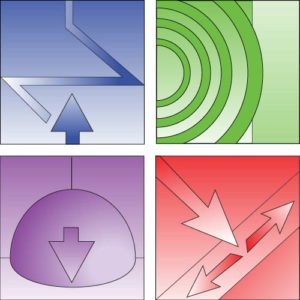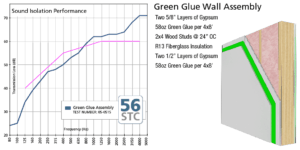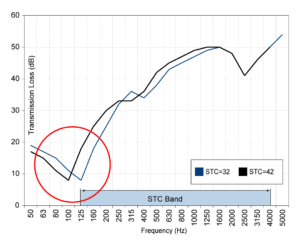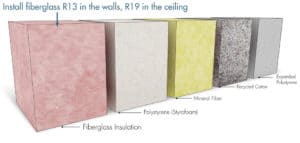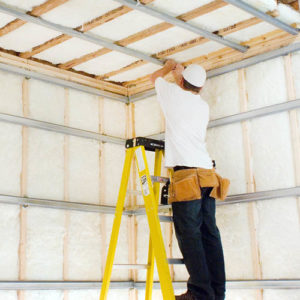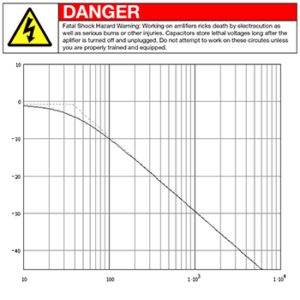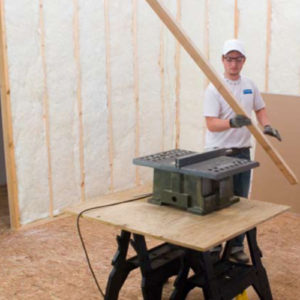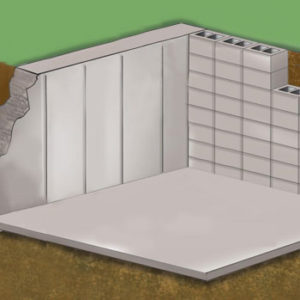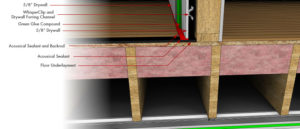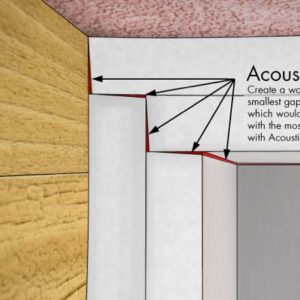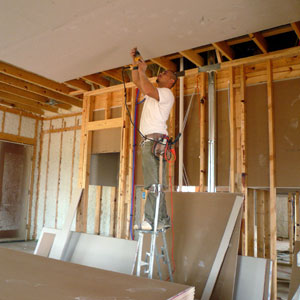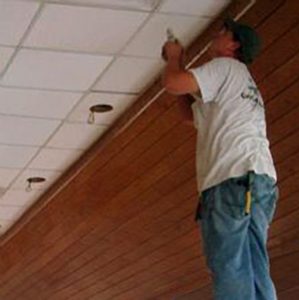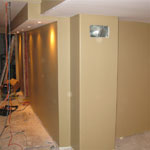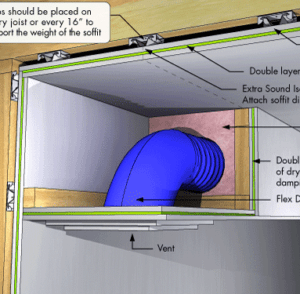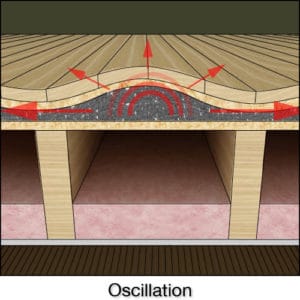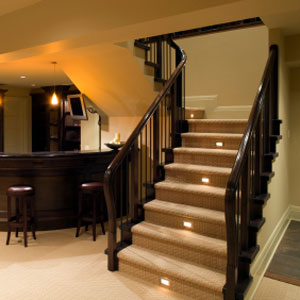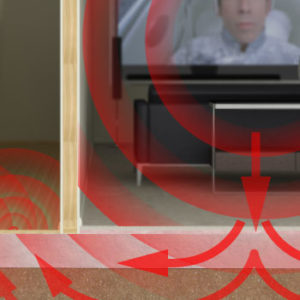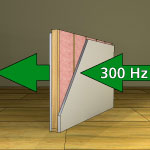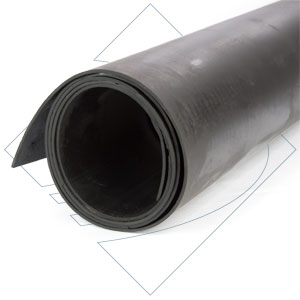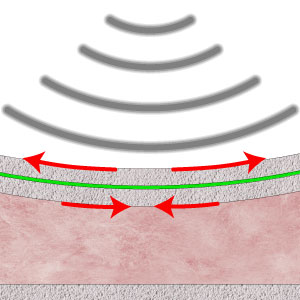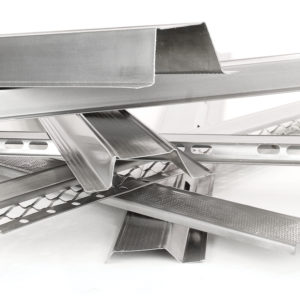Soundproofing 101 - The Basics
We believe the best way for you to make an informed decision is to understand the fundamentals of how sound works. That's why we created Soundproofing 101, a collection of educational articles for anyone who's curious about how sound works - and how to keep from hearing it.
Sound is a form of energy, just like electricity and light. A sound is made when air molecules vibrate and move in a pattern called waves, or sound waves.
How exactly do you build a soundproof room? Start with a basic understanding of soundproofing construction. If you understand the basics, you’ll have a more educated eye to view your problem room. In general, we are trying to stop vibrations from getting to “your” side of the wall or ceiling. Below is an illustration of…
STC ratings measure how well a partition attenuates airborne sound, but don’t account for low frequency bass, the leading cause of noise issues.
STC stands for sound transmission class This is the most common rating used in North America for determining airborne sound transmission loss between 125 and 4,000 Hz. This range covers the majority of common noises we hear including speech, television, music, dogs barking, and other similar annoyances. A higher STC rating often shows improved performance.…
Soundproofing a room, hallway, basement or other space can be daunting. No one wants to overspend and not get the results they’re looking for. Fortunately, you can soundproof a room well, at a reasonable cost, if you follow the basic, tried and true methodology. Follow the four steps below for the best soundproofing results, every…
Casual noise can be reduced to a tolerable level by simply “beefing up” existing walls, floors, and ceilings. However, if you want to achieve significant sound isolation, then a dedicated room construction is in order. This construction is seen most commonly when there is a great deal of noise to be contained within the room,…
We all want great sound in our home theaters, gaming rooms, rehearsal spaces or other rooms where there’s bound to be a lot of bass, which is low-frequency sound. Not surprisingly, specialty rooms generating a great deal of bass create special challenges in room design. Generally, the most difficult aspect of high-level isolation is controlling…
A well-built staggered stud wall increases the sound damping of a wall by creating two walls surfaces in one wall to stop sound vibration.
If you’re building a room in a basement, you’ll have some walls that are built next to the foundation walls. And you might be wondering what you need to do in terms of soundproofing. Basically, we’re not worried about sound leaking through the foundation into the surrounding soil. We’re worried about sound traveling straight up…
How to properly transition from a floor to a wall while maintaining soundproofing performance. The use of Soundproofing Floor Underlayment, Acoustical Sealant, Acoustical Backrod, Green Glue Soundproofing Compound and Sound Isolation Clips are required in this assembly diagram. Don’t forget Putty Pads for the outlets. All penetrations need to be sealed for maximum results.
Applying acoustical sealant reduces the risk of seal failure, as the remaining gap is small and easy to maintain over time.
On average, noise coming through a ceiling is the worst soundproofing problem you’re likely to encounter. The reason is two-fold. First, the hard flooring choices of today don’t help the noise control problem at all. Carpet and pad are used to reduce a lot of the noise. Hardwood, linoleum, and tile are not the friends…
If you’re watching costs on a soundproofing project, you might be wondering about priorities. Focus on soundproofing the walls? ceilings? A balance of both? The best answer is to save your money and not treat the walls. You could have the most impressive soundproof walls in the world, but you will not see their value…
When you create a room of any kind that’s dedicated to controlled sound, you will inevitably have sealed it up tighter than a drum. This is great for avoiding flanking noise via leaks, but not so great for cool, fresh air exchange. A typical room will need a 6″ supply and comparable return. These ducts…
Contrary to what you may have heard, flex duct will NOT solve all ventilation-related soundproofing issues.
These days most people want to remove carpet and pad from their floors. The build-up of dust and dirt makes many want to go to a hard surface that can be cleaned more easily. This is fine, except it makes the person below very aware of what you’re doing upstairs. Typical sounds that travel through…
Unfortunately, the open spaces in, around or behind staircases present soundproofing challenges. This is also true for basement rooms.
A concrete slab is generally an asset for airborne sound isolation. The large mass (weight) provides for a great deal of sound isolation from vibrations entering or leaving the room. But a slab does have an airborne sound weakness at its Coincidence Point (frequency). A floated plywood floor is often used to guard the slab…
The bottom line: For concrete walls and ceilings, bigger air cavities are better, but decoupling the mass is the real key.
When researching soundproofing solutions, it’s common to hear terms like mass law, mass-loaded vinyl (MLV), and massive drywall. From these terms, it’s easy to conclude that mass is the only thing that matters to soundproof a room. This is only partly true. Essentially, mass is not the only factor to consider with soundproof construction. It’s…
Below is a guide to the building materials weights for typical supplies used during the construction of your walls, ceilings and floors. Soundproofing Company recommends 5/8″ gypsum drywall for its heavy weight, at 2.5 lbs per square foot.
Sound flanking is the factor that most often causes soundproofing efforts to fail. Let’s suppose you share a common wall with a neighbor that keeps you up at night, or perhaps you have an upstairs neighbor that has big heavy feet. Let’s further imagine that you put 12 inches of lead on that wall or…
Damping is the conversion of energy over time and distance. Back in 2003 when we were running damping trials with an accelerometer, we found that damping pads and mats didn’t damp as well as products that started out as a paste. The conclusion was that the pad damping layers were too thick and not intimately…
We do not spec resilient channel; in fact, there is no single standard for manufacturing. Some are 20 gauge, some 25, some in-between, some slotted for flex, some are solid, and some have holes. Resilient channel isn’t a reliable choice The design of the channel is not standardized. Not something we can count on. Also, it is…
Resilient Channel, also known as RC-1 This is considered a “1 legged” material that is often used by itself to try and isolate sound. This is NOT a material specified by the SSMA and therefore there are dozens of questionable designs available in the marketplace. We discuss the serious limitations of Resilient Channel in another…
Get started today.
The Soundproofing Company wants to make sure your job is done right the first time; that's why it's important that we talk before you choose your products. These consultations are part of our service and are offered at no cost to you.
We have the lab reports, materials, diagrams, SIMS (Soundproofing Installation Manuals), and experience you need.

SINCE 1999 - The Soundproofing Company has over two decades of experience with soundproofing.

FREE CONSULTATION - Buy products with confidence. We know what works and the myths you should avoid.

CALL ANY TIME - Full phone support throughout the construction phase of your soundproofing project.

FULLY ILLUSTRATED MANUALS with material purchase (SIM). Detailed guides to give to your contractor.
CUSTOM FREIGHT QUOTES - Our shipping department knows how to get your order shipped to you quickly at the best price.


